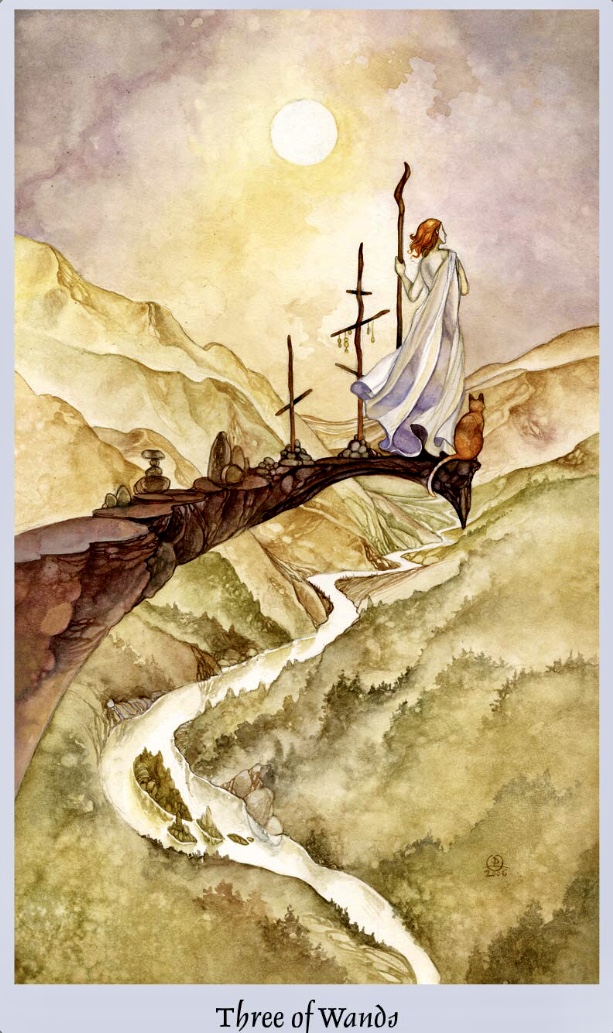The creative act is not pure. History evidences it. Sociology extracts it. The writer loses Eden, writes to be read and comes to realize that he is answerable.
 |
The earliest social scientists were deeply interested in understanding the full importance of modern economic institutions. In fact, since the eighteenth century almost all attempts to understand large-scale social change have dealt with the question of how economic institutions operate. But the age-old effort to understand economic institutions has not been merely an academic exercise. The fate of societies throughout the world has been and continues to be strongly influenced by theories about how economic institutions operate, or fail to do so, in nation-states with different types of political institutions. The major economic ideologies thus are also political ideologies, and economics is often called political economics (Heilbroner, 1995, Putting Economics in Its Place. Social Research, 62, 883-898). In this post we review three economic ideologies: mercantilism, capitalism, and socialism---and some variations of them. Political Economic Ideologies Mercantilism The economic philosophy known as mercantilism, which was prevalent in the 16th and 17th centuries, held that a nation's wealth could be measured by the amount of gold or other precious metals possessed by the royal court. The best economic system, therefore, was one that increased the nation's exports and thereby increased the court's holdings of gold. The mercantilist theory had important consequences for economic institutions. For example, the guilds or associations of tradespeople, that had arisen in medieval times were protected by the monarch, to whom they paid tribute. The guilds controlled their members and determined what they produced. In this way they were able to produce goods cheaply, and those goods were better able to compete in world markets, thereby increasing exports and bringing in more wealth for the court. But the workers were not free to seek the best jobs and wages available. Rather, the guilds required them to work at assigned tasks for assigned wages, and the guildmasters fixed the price of work wages, entry into jobs, and all working conditions. Land in mercantilist systems was not subject to market norms either. As in feudalism, land was thought of not as a commodity that can be bought and sold---that is, a commodity subject to the market forces of supply and demand---derived from feudal grants. Laissez-Faire Capitalism The idea of laissez-faire capitalism attacked the mercantilist view that the wealth of nations could be measured in gold and that the state should dominate trade and production in order to amass more wealth. The lassez-faire economists believed that a society's real wealth could be measured only by its capacity to produce goods and services---that is, by its resources of land, labor, and machinery. And those resources, including land itself, could best be regulated by free trade and world markets (Smith, 1965/1776, The Wealth of Nations).
The ideology of laissez-faire capitalism also sought to free workers from the restrictions that had been imposed by the feudal system and maintained under mercantilism. Thus it is no coincidence that the first statement of modern economic principles, Adam Smith's The Wealth of Nations, was published in 1776. Revolution was in the air---not only political revolution but the Industrial Revolution as well. And some of the most revolutionary ideas came from the pens of people like Adam Smith, Jeremy Bentham, and John Stuart Mill, who understood the potential for social change contained in the new capitalist institutions of private property and free markets. Private property as opposed to communal ownership is not merely the possession of objects, but rather, a set of rights and obligations that specify what their owner can and cannot do with them. The laissez-faire economists believed that the owners of property should be free to do almost anything they liked with their property in order to gain profit. Indeed, the quest for profit would provide the best incentive to produce new and cheaper products, and therefore required free markets in which producers could compete to provide better products at lower prices. These economic institutions are familiar to us today, but the founders of laissez-faire capitalism had to struggle to win acceptance for them. No wonder they thought of themselves as radicals. In fact, their economic and political beliefs were so opposed to the rule of monarchs and to feudal institutions like guilds that they could readily be seen as revolutionary. They believed that the state should leave economic institutions alone (which is what laissez-faire means). In their view, there is a natural economic order, a system of private property and competitive enterprise that functions best when individuals are free to pursue their own interests through free trade and unregulated production. Smith opens The Wealth of Nations by describing how wealth and prosperity are created through a self-regulating system of markets in which participants enter into contracts to buy and sell without outside influences or constraints. This classical model of capitalism and free markets hinges on three primary characteristics:
Smith's observations of markets convinced him that these three characteristics would produce a "natural harmony" among workers who contribute their labor power, landlords who rent land and other property, and capitalists who buy and build the machines and equipment and develop new enterprises to produce goods and services. When free to buy or sell their products or services in unfettered markets, the self-interest of millions of individuals create an orderly and wealthy society without the need for central direction from the state government. As Smith wrote: It is not from the benevolence of the butcher, the brewer, or the baker, that we expect our dinner, but from their regard to their own interest. We address ourselves, not to their humanity, but to their self love. . . . Every individual . . . [who] . . . employs capital . . . and laborers . . . neither intends to promote the public interest, nor knows how much he is promoting it. . . . He is . . . led by an invisible hand to promote an end which was no part of his intention. . . . By pursuing his own interest he frequently promotes that of the society. This doctrine of enlightened self-interest, often called "the invisible hand," is the central idea of laissez-faire or classical economics. As we will see, it is an idea that is continually invoked by those who wish to make markets the primary institution regulating economic and other transactions within and across the world's nations (Skousen, 2001, The Making of Modern Economics). Socialism As an economic and political philosophy, socialism began as an attack on the concept of private property and personal profit. These aspects of capitalism, socialists believe, should be replaced by public ownership of property and sharing of profits. This attack on capitalism was motivated largely by horror at the atrocious living conditions caused by the Industrial Revolution. The early socialists thought of economics as the "dismal science" because it seemed to excuse a system in which a few people were made rich at the expense of the masses of workers. They detested the laissez-faire economists' defense of low wages and wondered how workers could benefit from the Industrial Revolution instead of becoming "wage slaves." They proposed the creation of smaller scale, more self-sufficient communities that would produce modern goods but would do so within a cooperative framework.
Karl Marx taught that the socialist state must be controlled by the working class, led by their own trade unions and political parties, which would do away with markets, wage labor, land, and private ownership of the means of production. These aspects of capitalism would be replaced by socialist economic institutions in which the workers themselves would determine what should be produced and how it should be distributed. Marx never completed his blueprint of how an actual socialist society might function. That chore was left to the political and intellectual leaders of the communist revolutions---Lenin, Leon Trotsky, Rosa Luxemburg---and, finally, to authoritarian leaders like Joseph Stalin, Mao Zedong, and Fidel Castro. They believed that all markets and all private industry must be eliminated and replaced by state-controlled economic planning, collective farms, and worker control over industrial decision-making. Unless capitalist economic institutions were completely rooted out, they believed, small-scale production and market dealings would create a new bourgeois class. In the socialist system as it evolved under the communist regimes of the Soviet Union and China, centralized planning agencies and the single legal party, the Communists, would have the authority to set goals and organize the activities of the worker collectives, or soviets. Party members and state planners would also devise wage plans that would balance the need to reward skilled workers against the need to prevent the huge income inequalities found in capitalist societies. In soviet-style societies, markets were not permitted to regulate demand and supply; this vital economic function was supposedly performed by government agencies. Societies that are managed in this fashion are said to have command economies. The state commands economic institutions to supply a specific amount (a quota) of each product and to sell it at a particular price. (Note that not all command economies are dominated by communist parties. Germany under the Nazis and Italy under the fascists were also command economies.)
The Soviet system was notorious for the inefficiency of its economic planning and industrial production. Under the command system, factory managers must continually horde supplies, or raid supplies destined for similar factories in other regions, in order to meet their production quotas. Or they must trade favors with other factory managers to obtain supplies, a system that creates a hidden level of exchange based on bribes and favoritism. And because there are no free markets, goods that are desired by the public often are not available simply because the planners have not ordered them. In fact, in the Soviet-style economies there were always clandestine markets that operated outside the control of the authorities and supplied goods and services to those with means to pay for them. These underground markets thereby increased inequality in those societies and generated greater public disillusionment with command economies and one-party communist rule. The massive social upheavals of 1989 and 1990 brought an end to the communist command economic system. Today Russia has a mixed economy. It has come a long way since the 1991 breakup of the Soviet Union and its command economy. Today the government owns only the oil and gas industries (Amadeo, K., 2020, Aug. 19, How Russia's Pipeline Politics Holds the EU Hostage. The Balance). Democratic Socialism A far less radical version of socialism than that attempted in the Soviet Bloc is known as democratic socialism. This economic philosophy is practiced in the Scandinavian nations, especially Sweden, Denmark, and Norway, as well as in Holland and to a lesser extent in Germany, France, and Italy. It holds that the institution of private property must continue to exist because people want it to, and that competitive markets are needed because they are efficient ways of regulating production and distribution. But large corporations should be owned by the nation or, if they are in private hands, required to be run for the benefit of all citizens, not just for the benefit of their stockholders. In addition, economic decisions should be made democratically.
Democratic socialists look to societies such as Sweden and Holland for examples of their economic philosophy and practice (Harrington, 1973, Socialism). In Sweden, for instance, workers can invest their pension benefits in their firm and thereby gain a controlling interest in it. This process is intended to result in socialist ownership of major economic organizations. In the United States there is a long history of conflicted relations between workers and owners of capital. Cooperative systems in which authority and even ownership are shared are developing, but more slowly than in the social democracies of Europe. Social scientists who study the U.S. economy note that in recent years there has been a reaction among owners of capital against the principles of democratic socialism, especially those that stress cooperation between labor and management and the right of workers to organize unions and engage in collective bargaining (Freeman, 2000, What Workers Want). Employers have also shown diminished commitment to welfare capitalism, the political economic model that until recently has had a great deal of influence in the non-communist modern economies (Harrison, 1994, When Government Gets It Right. Technology Review, 97, 66). Welfare Capitalism Emerging to some extent as a response to the challenge posed by the Russian Revolution (which called attention to many of the excesses of uncontrolled or laissez-faire capitalism), welfare capitalism represented a new way of looking at relationships between governmental and economic institutions. Welfare capitalism affirms the role of markets in determining what goods and services will be produced and how, and it also affirms the role of government in regulating economic competition (e.g., by attempting prevent the control of markets by one or a few firms). Welfare capitalism also stresses the role that governments have always played in building the roads, bridges, canals, ports, and other facilities that make trade and industry possible. Expanding on this rule, the theory of welfare capitalism asserts that the state should also invest in the society's human resources---that is, the education of new generations and the provision of a minimum level of healthcare. Welfare capitalism also guarantees the right of workers to form unions in order to reach collective agreements with the owners and managers of firms regarding wages and working conditions. It creates social welfare institutions like Social Security and unemployment insurance. And in order to stimulate production and build confidence in times of economic depression, welfare capitalism asserts that governments must borrow funds to finance large-scale public works projects like the construction of the American interstate highway system during the 1950s.
The theory of welfare capitalism is associated with the writings of John Maynard Keynes, Joan Robinson, John Kenneth Galbraith, and James Tobin, all of whom contributed to the revision of laissez-faire economic theory. Welfare capitalism dominated American economic policy from World War II until the 1970s, when a succession of economic crises---inflation, energy shortages, and unemployment turn the thoughts of many Americans once again toward laissez-faire capitalism. Today, however, the increasingly evident gap between the haves and the have-nots in U.S. society has created renewed interest in enhancing the institutions of the welfare state---unemployment insurance, health insurance, low income housing, public education, and others. At the same time, fear of governmental control over people's lives, and it's costs in the form of higher taxes, has generated a revolt against the welfare state in many segments of the population in the United States and other industrial Nations. This trend has resulted in conservative electoral victories and unprecedented reductions in social spending. What is not clear is whether the public's desire for relative security from economic stress will outweigh the desire for lower taxes and reduction in the scope of government bureaucracies. *MAIN SOURCE: KORNBLUM, W., (2003), SOCIOLOGY IN A CHANGING WORLD, 6TH ED., PP. 593-596* end |







No comments:
Post a Comment